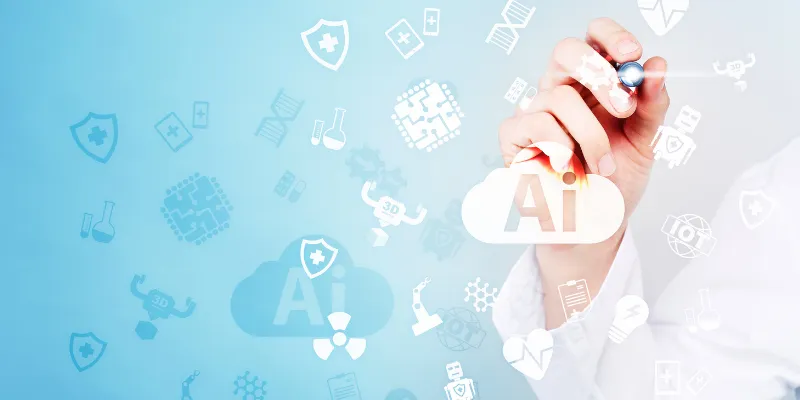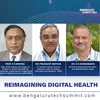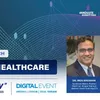Healthcare 2020: Disruptions due to COVID-19, rise of telemedicine, and other key trends
Healthcare in India has been undergoing digitisation for some time now. But, 2020 became a game-changer as COVID-19 gave rise to digital disruption, as well as accelerated growth.
It’s been a busy year for healthcare, to put it mildly. The COVID-19 pandemic not only revealed the chinks in the system but also accelerated digitisation in the sector, forcing people to shift online almost immediately.
According to a recent report by IBEF, the digital healthcare market in India is expected to increase at a CAGR of 27.41 percent to reach $485.43 billion by 2024 from $116.61 billion in 2018. YourStory Research also reveals that startups in the healthtech/healthcare sector raised funding of $110.7 million as of July 2020.
Within the digital healthcare ecosystem, telehealth and mobile health became dominating trends. As COVID-19 brought about social distancing and lockdowns, not only did people choose to switch to video and audio consultations, but they also began using fitness and wellness applications to track their health and pre-screen themselves in case of any symptoms.
COVID-19 also helped people realise the potential of digitisation in this sector and opened up newer opportunities for companies.
In November, at Bengaluru Tech Summit 2020, Dr Indu Bhushan, CEO of Ayushman Bharat Pradhan Mantri Jan Arogya Yojana & National Health Authority, Government of India, said that healthcare stakeholders need to focus on making “India a digital health nation”.
The year 2020 not only pushed the boundaries for improvements in this sector but also gave rise to numerous innovations and changes in the ‘new normal’.
YourStory lists some of the important trends in healthcare as seen this year.

Representational Image
Clinic visits to telemedicine
According to a 2019 report by McKinsey Global Institute, if telemedicine services could replace 30 to 40 percent of in-person consultations in India coupled with digitisation in the overall healthcare industry, the country can save up to $10 billion by 2025.
Telemedicine not only helps avail healthcare benefits at a lower cost, but also allows patients to consult doctors in any part of the world. Simply put, teleconsultation helps you stay connected with your doctor — at your convenience.
On India Internet Day 2020, an event organised by TiE Delhi, Dr Sunita Maheshwari, Senior Consultant, Pediatric Cardiologist at Bengaluru-based RXDX and Teleradiology Solutions, said that COVID-19 not only led to the acceptance of teleconsultations by consumers, but also by doctors.
According to her, doctors might have somewhere believed face-to-face consultations were better than online consultation. However, when the pandemic broke out, healthcare providers immediately pivoted to an online model and welcomed the digital system.
Before the outbreak of coronavirus, legalities around telemedicine weren’t clearly defined. However, the Government of India released updated telemedicine guidelines on March 25, 2020, which legalised teleconsultation and telemedicine practice in India. These guidelines state that patients can now consult with doctors over chat, audio, or video for diagnosis.
Highlighting similar points, in an earlier interaction with YourStory, Pillalamarri Sridhar and Sundararajan Srinivasan, co-founders of telemedicine startup Health, said that traditionally, healthcare services, which were concentrated in hospitals, will now be delivered to remote points using hybrid virtual-physical models.
Increased use of deeptech and smart devices
Gaurav Gupta, Co-founder of , believes that artificial intelligence has the potential to transform the way healthcare is delivered.
“AI in healthcare has potential in improving healthcare chronic care management, care delivery, clinical decision support, selfcare prevention/wellness, and diagnostics,” he adds.
Deep technologies such as AI and ML are being leveraged across the industry, especially in diagnosis, predictive care, self-assessment, remote healthcare delivery, among others. This may have the potential to ensure a predictive model in healthcare and collect medical data to identify danger zones or healthcare trends.
“The biggest issue with healthcare right now is the skewed ratio of caregivers to the people that require medical attention. The only way to cope up to the rising numbers will be to automate a significant amount of work in this sector. AI and ML can play a significant role in adding intelligence to this automation to ensure that technology assists healthcare professionals,” says Gaurav Parchani, CTO and Co-founder of .
Apart from deeptech, Anup Jain, Managing Partner, Orios Venture Partners, says that smart devices are also a rapidly growing field of what is known as digital therapeutics. The venture capital firm has made investments in several healthtech players including , , and .
“Companies such as Beato have launched their Smartphone Glucometer for diabetics, whereas market leaders still sell offline glucometers that do not help consumers store their data on cloud seamlessly. This trend will continue to gather steam and we will see an inversion happen in the next few years as old technologies become redundant,” he adds.

Representational Image
Opting for predictive analytics and data-driven approach
Digitisation in healthcare means a rising need for electronic medical records (EMR).
“India is a data-poor country with non-existent EMR systems or basic healthcare MIS to track individual metrics. We are at ground zero in the space of data. Without data, one cannot apply AI so readily. Hence, the potential is large — it's a blue ocean as more tech startups create the data for modelling outcomes and prognosis,” Anup says.
According to Dr Prashant Borade, Head of Critical Care Unit at Global Hospitals, Mumbai, several issues such as poor doctor patient ratio, growing chronic disease burden, low insurance penetration, saturated urban and poor rural healthcare quality, infrastructure and manpower, and poor compliance to medication, among others are plaguing the Indian healthcare system. These inadequacies can be largely addressed using technology, he adds.
“There is a tremendous opportunity to disrupt the traditional model and shift the health care paradigm and focus on prevention i.e. from ‘reactive to proactive’. There is motivation for healthcare providers to embrace electronic medical records, enabling AI to obtain insights from patient data resulting in better delivery of treatment. This also helps medical expertise reach an underserved rural population through telemedicine and tele-consulting programmes, delivered over mobile phones. India’s healthcare industry is becoming more and more attractive for investors, with technology-led innovations helping penetrate Tier-II and III areas,” says Dr Prashant.
Medical data availability might be crucial in implementing predictive care solutions to ensure intervening at an early stage. In cases like a pandemic and epidemics, predictive analytics can also be used to identify dangerous zones and prepare appropriate rules and regulations to control the situation.
“For healthcare, predictive analytics will enable the best decisions to be made, allowing for care to be personalised to each individual. Predictive analytics tools are helping healthcare organisations stay ahead of poor outcomes, resource shortages among others. Benefits of predictive analytics include accuracy of diagnosis and treatment in personal medicine, improving efficiencies for operational management of healthcare business operations,” Gaurav adds.
The Indian government has already taken a step towards data-driven healthcare with its Ayushman Bharat initiative, which provides free healthcare facilities to almost 10 crore underprivileged families. At the BTS2020 online event, Dr Indu explained that it is the first Indian healthcare scheme, which has been data driven since its launch. It monitors every treatment and transaction under the scheme and leverages tech to assure quality of service.
The path ahead
Ankur Bansal, Co-founder and Director, , a venture capital firm that backs healthcare players such as Brinton Pharmaceuticals and OneInsure, believes that while a majority of doctors have understood the advantages of telemedicine, they had difficulty in implementing it. According to a survey by the International Journal of Scientific Research, almost 67 percent of doctors struggled with teleconsultation.
“Reskilling and training is the primary requirement for doctors as they start dealing with new tech powered by AI and ML. Secondly, data security is a crucial aspect of data storage and sharing. India is yet to lay out strong data protection laws, although the government has started taking steps in this direction,” he adds.
According to Anup, cloud-based digital health platforms, telehealth platforms, and e-pharmacies will be crucial for streamlining and digitising the processes of healthcare delivery.
Edited by Saheli Sen Gupta




![[TechSparks 2020] From Oct 1, all health insurance policies will cover mental illnesses: PolicyBazaar CEO](https://images.yourstory.com/cs/2/77e43870d62911eaa8e9879653a67226/Imageymsy-1603964337633.jpg?fm=png&auto=format&h=100&w=100&crop=entropy&fit=crop)






